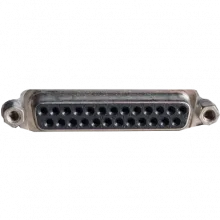
A parallel port is a type of interface found on computers (personal and otherwise) for connecting various peripherals. It is also known as a printer port or Centronics port . The IEEE 1284 standard defines the bi-directional version of the port.

A parallel port is a type of interface found on computers (personal and otherwise) for connecting various peripherals. It is also known as a printer port or Centronics port . The IEEE 1284 standard defines the bi-directional version of the port.